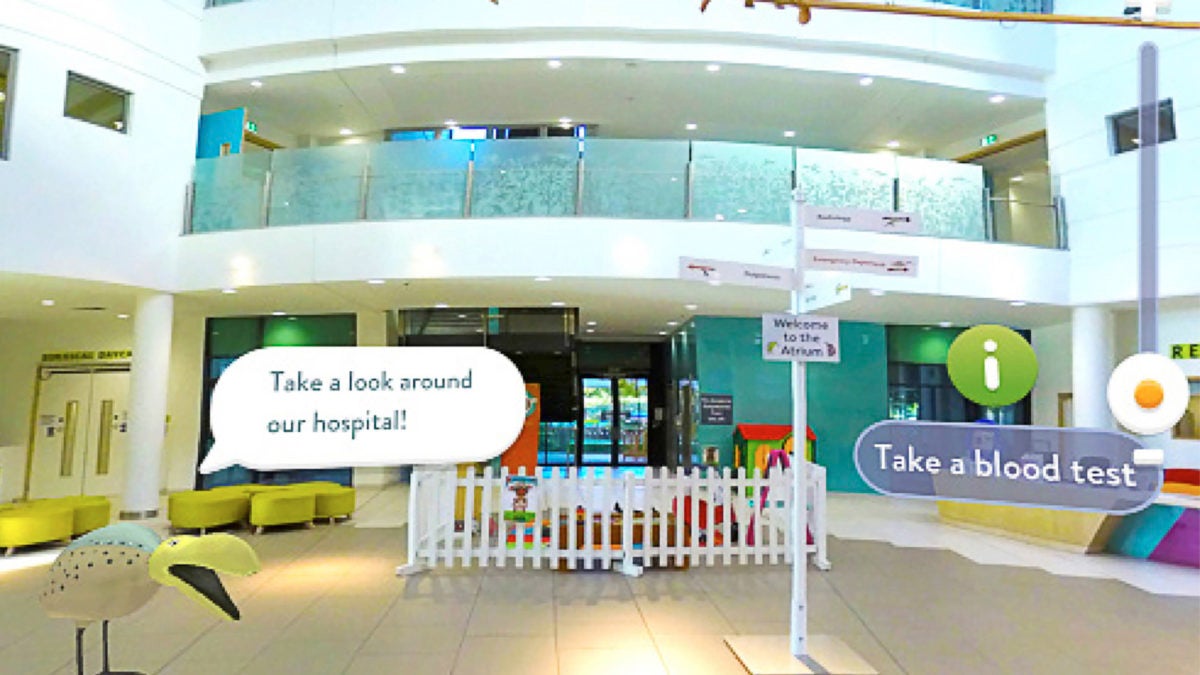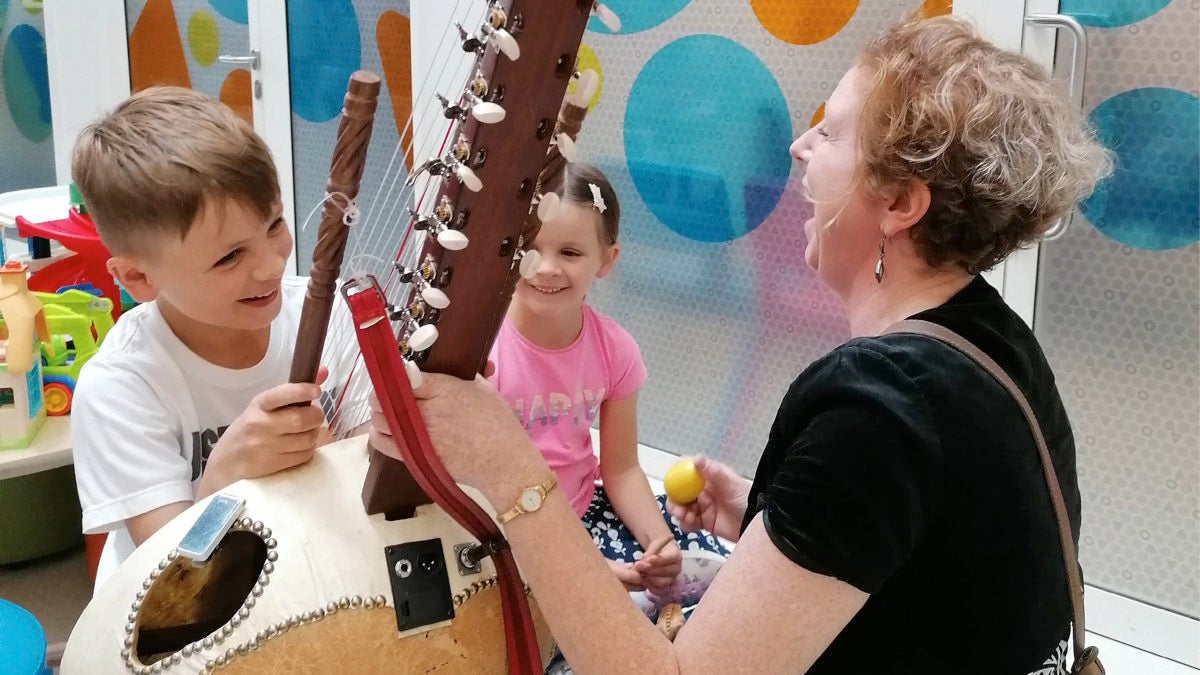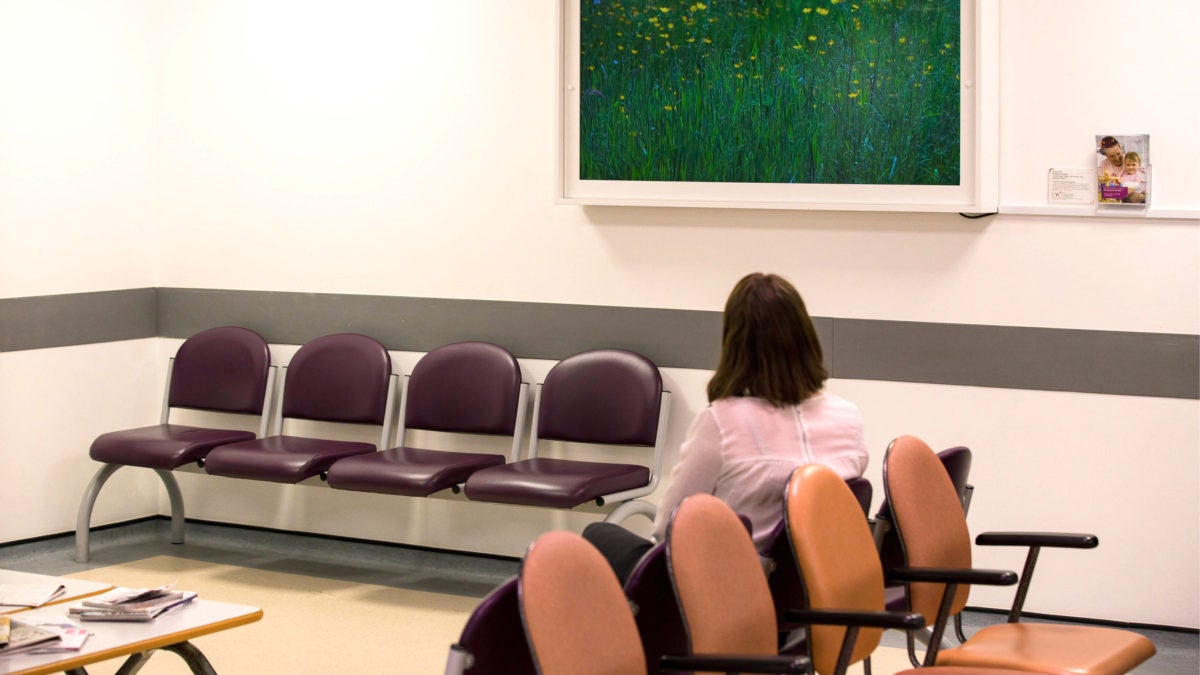Art can have a remarkable impact on people’s health. Chelsea and Westminster Hospital has found that using visual art for cancer patients undergoing chemotherapy decreased their stress, depression and anxiety, while other studies show the presence of art can reduce pain. Here are five ways UK hospitals are using creativity to improve patients’ experiences.
1. Relaxation rooms
Guy’s Hospital in London opened a cancer centre in 2016, which includes The Living Room, a non-religious meditation space for patients, visitors and staff. The room features four listening stations where people can choose from 32 calming soundscapes, ranging from natural settings, such as the sea, to urban ones, including rush hour in Bangkok. The four zones use speakers incorporating directional sound, so only people sat underneath them can hear.
Screens show a written description of the soundscape’s location, along with the current weather and time there, but do not feature imagery, encouraging cancer patients to explore with their imaginations. While pre-recorded, the soundscapes respond to real-time data, so if it’s raining, the patient will hear it.
The room features bamboo and fabric furniture to help it feel less clinical and visitors can leave their thoughts in notebooks, with positive feedback including “peaceful, private and relaxing”. Liz O’Sullivan, arts manager at the hospital, says: “Cancer treatment can be brutal and gruelling; it isn’t just the physical condition, it’s the mental strain. Having a place to escape, think and decompress is so important.” Design was by Between Art and Technology and The Workers studios.

2. Interactive apps
Augmented reality (AR) is being harnessed to help young cancer patients. Liverpool’s Alder Hey Children’s Hospital launched Alder Play last year, an app where users choose a 3D character which is projected on to the real-world environment and travels with them through the hospital.
The app offers games and virtual tours, and encourages users to familiarise themselves with the hospital space by combining AR and physical art, such as a digital bird that flies around a real-life tree installation in the atrium.
It also has a virtual assistant called Ask Oli, so parents can ask questions. The technology aims to distract patients from difficult situations and empower them to learn more about their treatment, says Emma Hughes, associate chief innovation officer at Alder Hey.
“There was one cancer patient who was really unhappy with having chemo injected through his arm,” she says. “We used the app to display an AR character on to his shoulder and suddenly he could look. It helped build his acceptance.”
The app has reduced patient anxiety and decreased procedure time and, in doing so, has also benefited staff. “Patients’ compliance with medication and tests has been much quicker and easier,” says Ms Hughes. The app was developed by ustwo with Alder Hey.

3. Wall graphics and illustration
The Christie cancer hospital in Manchester opened its new proton beam therapy centre last year and decided to fill its children’s department with animal-themed wall art to help its young cancer patients.
Designers created a jungle, centred on a “proton panda” and friends, including koala bears, elephants and flamingos. The art is in all rooms, with paw prints on the floor acting as navigation.
The centre has a playroom, which encourages patients to learn about their condition. They can put toy animals through mini medical machinery, such as computerised tomography (CT) scanners and attach prop-style magnets, such as intravenous drips, to animal illustrations on a magnetic wall.
They can also design their own mask to use during therapy and contribute to weekly wall art themes. “There’s a lot to interact with,” says Joanne Roberts, senior sister for paediatrics. “It’s a really good distraction. The craft lets them bring a sense of home with them and make an impact on their environment.” Design was by Music studio and illustration by Jane Bowyer.

4. Creative workshops
Sheffield Children’s Hospital runs a charity-funded arts programme, which includes creative workshops for patients. It puts on three sessions a week, including pottery, creative writing, circus skills and ukulele, based on patient recommendations.
Charlotte Newton, workshop co-ordinator, says the sessions motivate patients, giving them a greater sense of purpose and helping them express themselves.
“A long-term patient can have less autonomy and stimulus than they would at home,” she says. “They are susceptible to boredom, often feeling their identity is defined by their condition. Making art and music counteracts this; it’s all about making decisions. It also has a powerful impact on their memories
of hospital.”
Taking part can be momentous for families, too. “I ran a workshop on the cancer and leukaemia ward where children and parents drew each other,” says Ms Newton. “A parent told me that it allowed her to ‘see’ her child again and all his ‘beautiful details’, forgetting about the machinery surrounding him.” The programme was developed by Artfelt.

5. Digital artwork
London’s Chelsea and Westminster Hospital runs a charity-funded arts programme, which includes digital artwork installed in cancer examination rooms. To make cervical cancer tests (colposcopies) more bearable, the hospital installed screens featuring 60 hours of footage, accompanied by soundscapes. These include natural and urban settings, culturally specific and generic activities such as wood carving and baking bread. The speed of the films reflects a slow pace of up to 20 beats a minute.
Patients can choose the digital artwork they would like to see and the project is proving to be a positive distraction for most women during what can be an uncomfortable procedure: out of 50 women, 85 per cent said the art improved their colposcopy experience.
While the hospital still uses static art, the benefit of screens is that art can be easily adapted, says arts director Trystan Hawkins. “It’s easy to curate, change things and personalise,” he says. “We don’t always get it right first time.” The initiative is funded by the hospital’s charity CW+.
1. Relaxation rooms

2. Interactive apps

